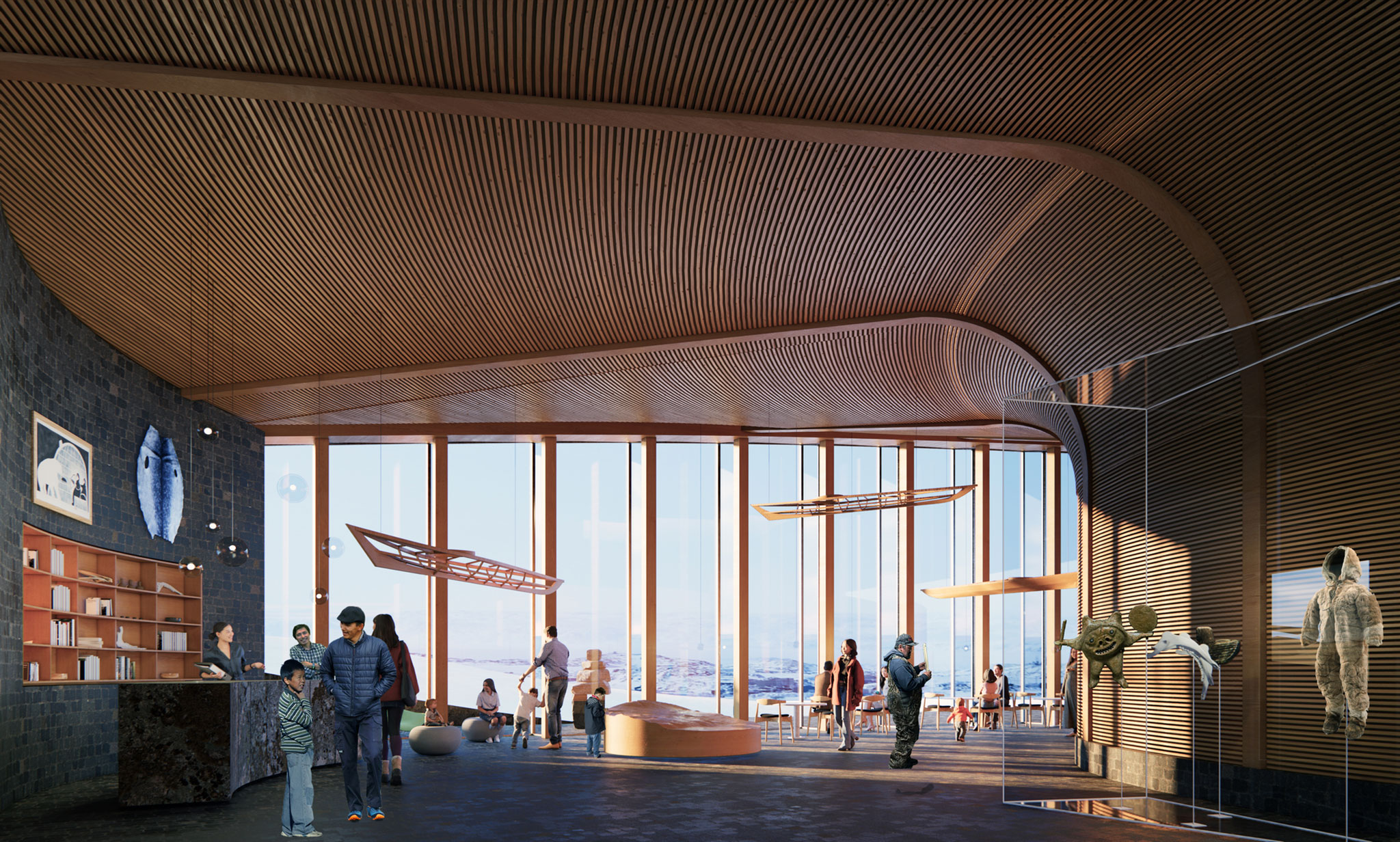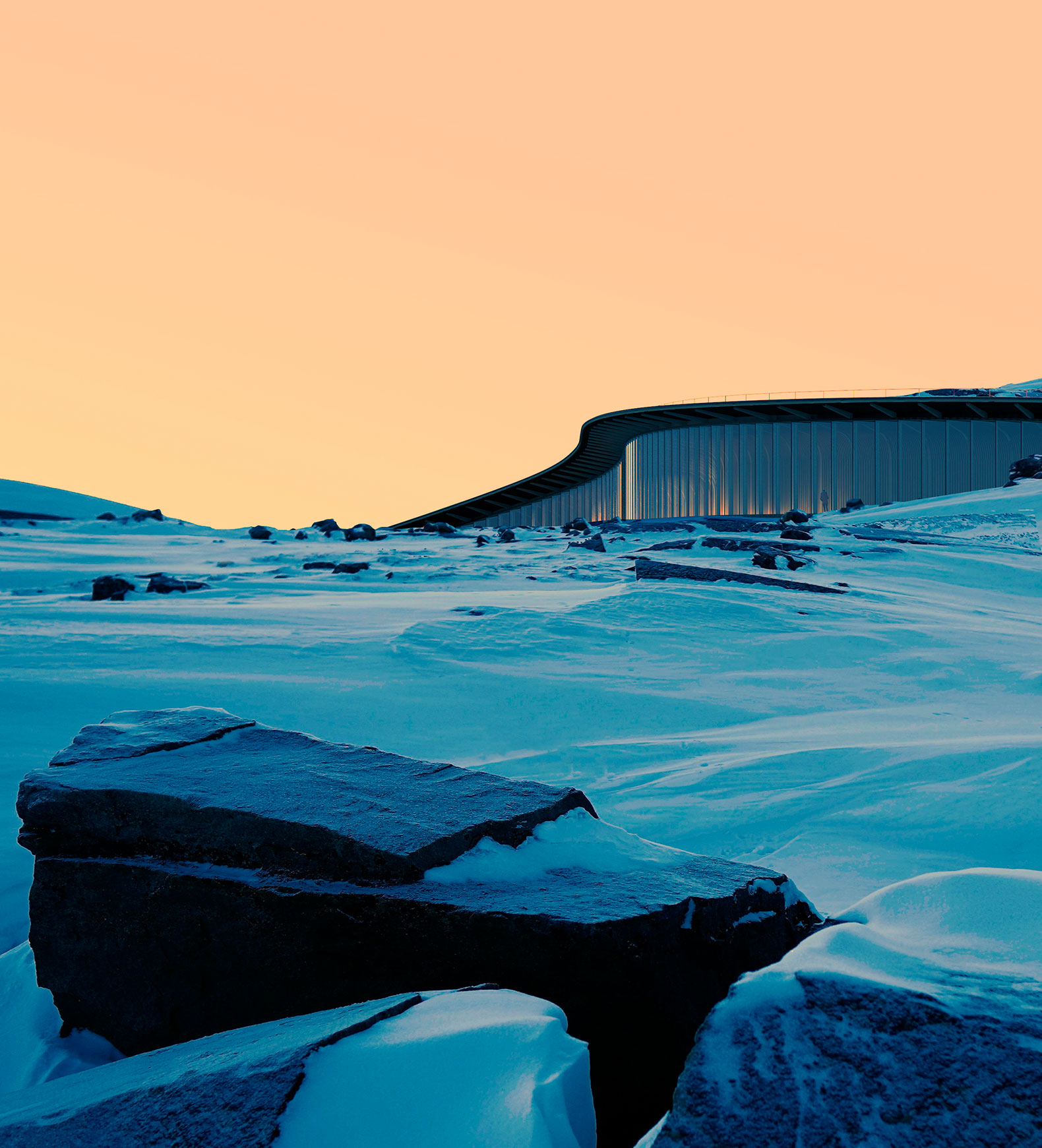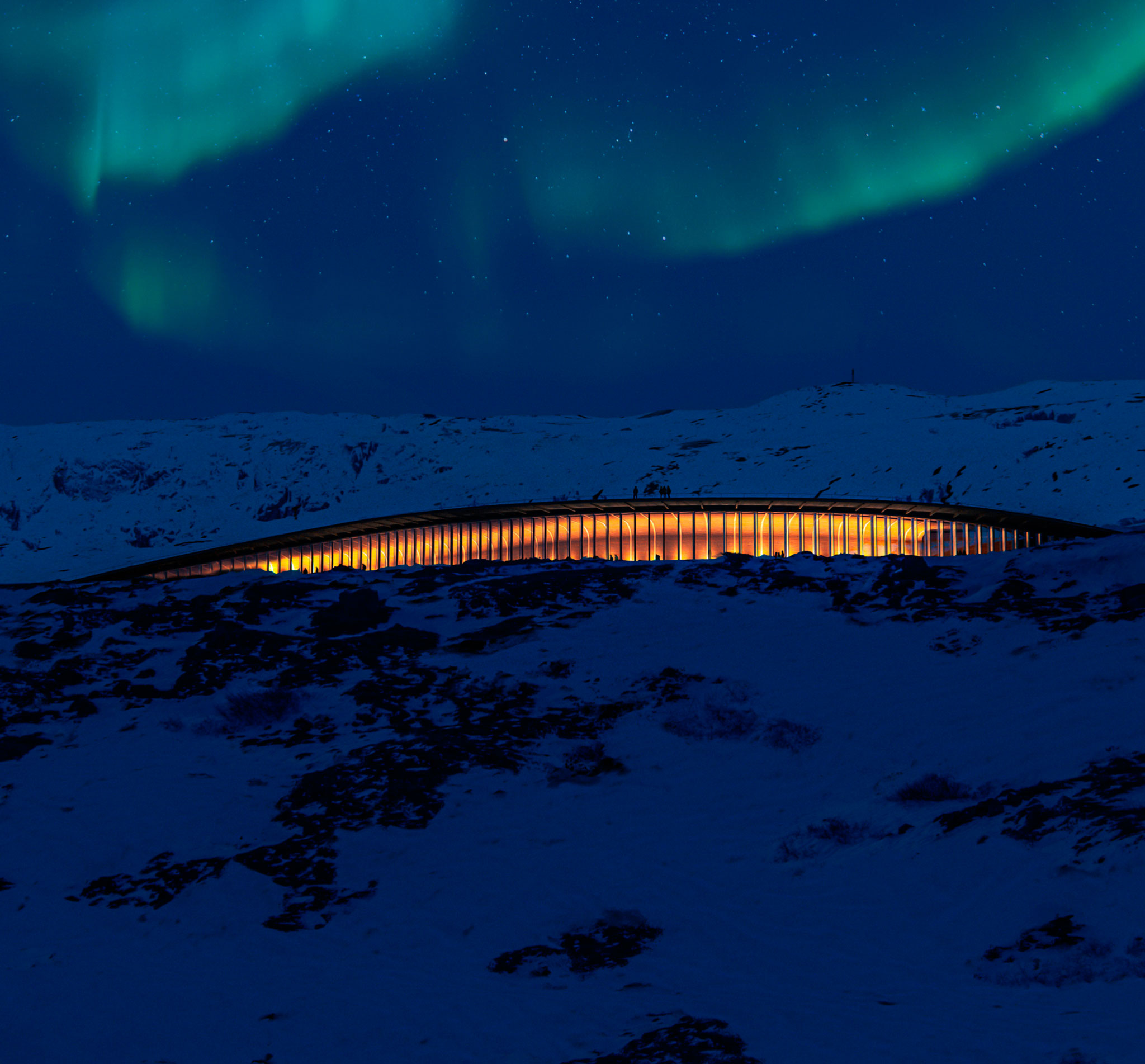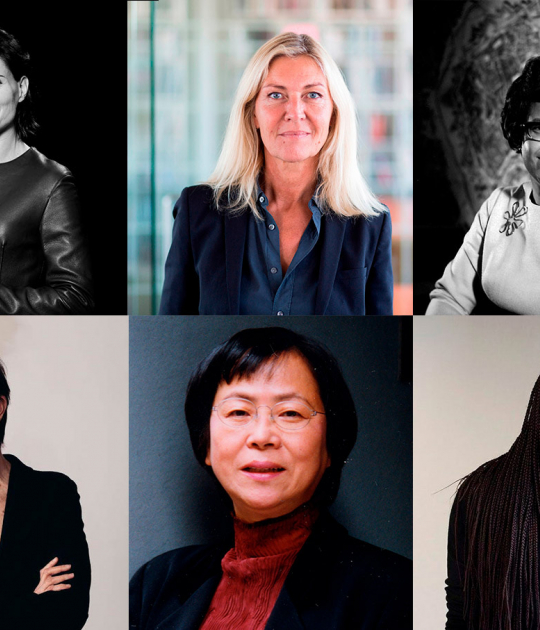A place to engage and heal
Dorte Mandrup convinced the jury with a beautiful and poetic response, expressing great consideration for the community perspectives on Inuit traditional knowledge and the healing potential for the Inuit Nunavut Heritage Centre. The design of the building is informed by the landscape and the movement of the snow and the wind. Drawing inspiration from the patterns formed in snowdrifts by the prevailing wind, kalutoqaniq, which has long served as a natural wayfinding system for Inuit, the building carves into the rocky hillside overlooking Iqaluit and follows the curves and longitudinal features of the landscape.

Nunavut Inuit Heritage Centre by Dorte Mandrup. Rendering by MIR.
The Nunavut Inuit Heritage Centre will be built in Iqaluit to honour the Canadian Governments commitment to the Nunavut Agreement which identified an urgent need for a territorial heritage facility. The centre will encourage the growth of local heritage and foster a network of cultural centres across the territory where the Inuit can reconnect with their heritage and find a stronger sense of identity and culture.
“We have waited many years for this opportunity and have never been this close to realising our dream. The need for a territorial heritage centre was first identified in the Nunavut Agreement and thirty years later we are still without a place of our own. As a result, many items made by our ancestors are stored in southern facilities. With few opportunities for Inuit to engage with these items, we continue to be disconnected from this important part of our cultural heritage. But there is a growing momentum for an Inuit-owned and operated facility.”

Nunavut Inuit Heritage Centre by Dorte Mandrup. Rendering by MIR.
Taking advantage of the natural landscape
What the building takes away from the land, it gives back with a generous roof that merges with landscape and offers a new natural outdoor gathering place with unhindered views over the vast tundra. The roof will be covered in rock and turf, dissolving the lines between the building and the terrain while ensuring a continuous movement across the landscape. By taking advantage of the protective rock, the building structure forms a shelter that naturally embrace the sensitive collections and exhibits beneath. An open slit in the hill creates a daylit space for the different activities and gatherings taking place in the centre.
The Nunavut Inuit Heritage Centre will provide a venue for several activities and serve as a gathering place for the preservation and celebration of Inuit culture and heritage. Apart from the exhibition spaces the centre will house a café, workshop area, conservations lab, shop, daycare centre, hostel, and offices and connect to a large outdoor area that offer spaces for traditional practices such as carving, kayak building, tool making, and berry picking.

Nunavut Inuit Heritage Centre by Dorte Mandrup. Rendering by MIR.
An approximately 5,500 m² Centre will be built in Iqaluit with a mandate to foster the development of a network of heritage/cultural centres in each region and coordinate territory-wide collaborative exhibitions and programs. The NIHC is conceived of as a centre that focuses on living heritage, the continuity of Inuit culture and language, as well as the preservation and exhibition of cultural belongings.
The legacy of colonialism – the residential school system, the rupture of families through relocation to communities, the TB crisis and the 60s’ Scoop – and marginalization of Inuit culture, values and traditions in present-day Nunavut left many Inuit interested in reconnecting with their collective past to find a stronger sense of identity and culture. The NIHC will help Inuit to discover valuable insights and renegotiate their individual and collective cultural identities.


























